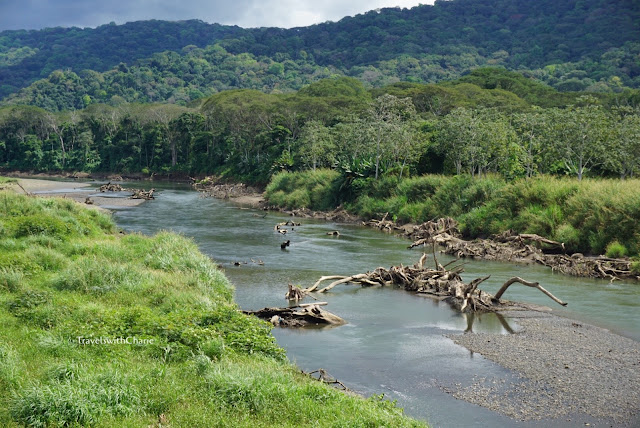Tarcoles River
On my way to Jaco, we passed by the small town of Tarcoles where crocodiles bask lazily on the banks of the river. There were quite a few of them that I lost count.

If you like crocodile teeth, you can buy one for $12.00. A vendor was trying to sell me a corded necklace with a crocodile tooth for $10.00.
Watermelon is grown in the manicured field in the background. I wonder if the crocodiles find their way there sometimes.
Before leaving the town of Tarcoles, we watched monkeys hanging out in the surrounding trees. Talk about monkeying around!
How to get there:
I took Tico Shuttle from Escazu to Jaco and we stopped at Tarcoles to see the crocodiles from Crocodile Bridge. Tarcoles is on the way to Jaco. My driver was careful and drove safely at all times. He wore a mask as I did. I had the van to myself as a solo passenger. I highly recommend Tico Shuttle for transfers in and around Costa Rica. ticoshuttle.com
There are also public buses that go to Jaco from San Jose and you could stop at Tarcoles then catch the next bus to Jaco.
*****
Images by TravelswithCharie



